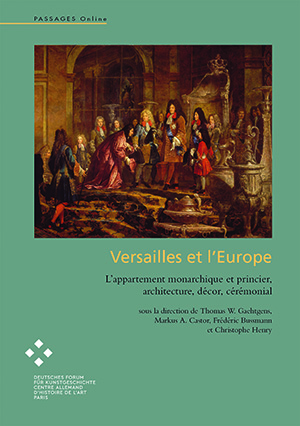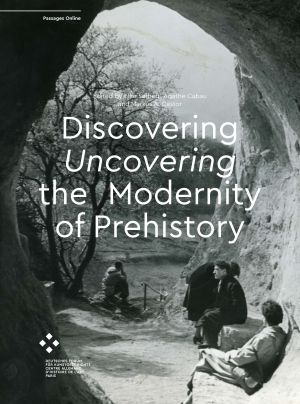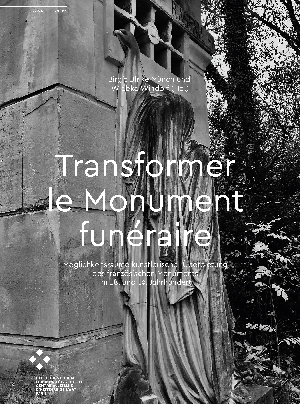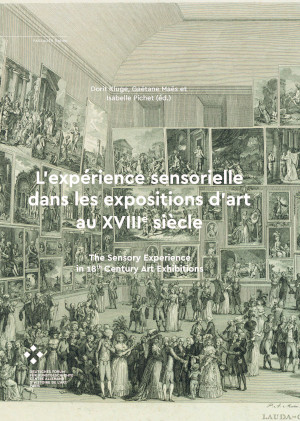Castor, Markus A.
Entre croyance aux miracle et iconoclasme: L’espace sacré en France au XVIIIe siècle
In diesem Tagungsband sollen die Evidenzen, religiösen Erfahrungen und ästhetischen Transformationen des sakralen Raums im Zeitalter der Aufklärung aus einer inter- und transdisziplinären Perspektive beleuchtet werden. Inwiefern sollten wir die Kirche im 18. Jahrhundert nicht nur als heiligen Raum begreifen, sondern auch als einen Ort, der Gläubige und Touristen, Geistliche und Künstler, Adlige und Bürger, Männer und Frauen gleichermaßen anzieht und gleichzeitig eine soziale, ästhetische und emotionale Dimension aufweist? Wie lassen sich die grundlegende Säkularisierung und die Entgrenzung erklären, die den sakralen Raum zwischen dem Tod Ludwigs XIV. und der Französischen Revolution betrafen? Wie wird im Zeitalter der aufkommenden Naturwissenschaften, Enzyklopädien und des Wissensfortschritts in der Kunst mit der Frage nach der Glaubwürdigkeit der Transzendenz umgegangen? Vor dem Hintergrund der Konfrontation zwischen Kritik an der Kirche und am Absolutismus, Atheismus, Entmystifizierung des Religiösen und plausibler Reaktualisierung des Spirituellen sind (syn)ästhetische Konzeptionen sakraler Räume von besonderer Relevanz. Nicht nur in kunsttheoretische Diskurse eingebunden, sind sie ein greifbarer Ausdruck der kontinuierlichen Neujustierung der aufklärerischen Gesellschaft.
Ces actes du colloque se proposent d’interroger les évidences, expériences religieuses et transformations esthétiques de l’espace sacré au siècle des Lumières à partir d’une perspective intermédiale et transdisciplinaire. Dans quelle mesure devons-nous appréhender l’église, au XVIIIe siècle, non seulement comme un espace sacré mais aussi comme un lieu attirant tout autant croyants et touristes, ecclésiastiques et artistes, nobles et bourgeois, hommes et femmes ; et investi simultanément d’une dimension sociale, esthétique et affective ? Comment expliquer la sécularisation fondamentale et le décloisonnement qui affectent l’espace sacré entre la mort de Louis XIV et la Révolution française ? À l’ère de l’émergence des sciences naturelles, des encyclopédies et des avancées de la connaissance , comment l’art traite-il la question de la crédibilité de la transcendance ? Sur fond de confrontation entre critique de l’Église et de l’absolutisme, athéisme, démystification du religieux et réactualisation plausible du spirituel, les conceptions (syn)esthétiques des espaces sacrés revêtent une pertinence toute particulière. Loin de n’être que des discours de théorie de l’art, elles sont en effet l’expression tangible du réajustement continu de la société des Lumières.
Versailles et l'Europe: L’appartement monarchique et princier, architecture, décor, cérémonial
Der vorliegende Band untersucht den Einfluss eines der brillantesten Repräsentationsleistungen der Frühen Neuzeit auf die europäischen Höfe des 17. und 18. Jahrhunderts. Das Versailler Schloss, ein „Showroom“, der die französischen Luxusgüter über die Grenzen hinaus bekannt und zum begehrten Gut machte, zog die Blicke aller Regenten der Zeit auf sich. Doch wenngleich von Künstlern und Kunsthandwerkern, die sich an den europäischen Höfen niederließen, zahlreiche Formen und Ideen übernommen wurden, darf die Beharrlichkeit der lokalen Traditionen dennoch nicht unterschätzt werden.
Beginnend mit einer Analyse des Versailler Appartements nach Form und Funktion wird das in Frankreich entwickelte Modell in seiner Bedeutung für die Konzepte des Appartements der europäischen Höfe betrachtet. Die Beiträge analysieren das Zusammenspiel von Architektur, Dekor und Zeremoniell und die besondere Bedeutung des Appartements für die höfische Repräsentation. Die räumliche Disposition tritt als komplexes Verweissystem hervor, das die Inszenierung der Macht und die Zugänglichkeit des Regenten bestimmte. Die Logik der Ausstattungssysteme erschließt sich nur in interdisziplinärer Betrachtung, die auch die sozialen und politisch--historischen Bedingungen berücksichtigt. Bereits vorhandene Traditionen der europäischen Häuser werden in diesem Prozess zwischen Übernahmen und Transformationen neu konfiguriert.
Der erste Teil widmet sich dem in Frankreich entwickelten Modell des Appartements und versucht die komplexe Entwicklung in Versailles bis 1701 nachzuvollziehen, in der die Chambre de Parade zum Herzstück des Schlosses wurde. Im zweiten Teil beleuchten die Fallstudien zu Residenzen der deutschsprachigen Länder den komplexen Austausch und die Vielfalt der heterogenen Lösungen. Mit Beiträgen zu einigen wesentlichen europäischen Höfen in England, Holland, Schweden, Polen, Spanien und Italien schließt die Studie ab.
Discovering/Uncovering the Modernity of Prehistory
The research field of prehistory and modernity is very topical in both French as well as German art history, though the traditions differ. In view of this historical situation, the conference’s goal (German Center for the History of Art Paris, 2017) was to raise awareness and initiate a dialog, which opened up new perspectives for all participants and generated innovative research. Prehistory, or primeval times, leads back to fundamental art historical questions: When did abstraction begin? What specific qualities of prehistoric artefacts contributed to solutions to artistic problems of the European avant-gardists like Picasso, Miró, Baumeister, Giacometti or Bataille? What is characteristic of prehistoric art as compared to other arts premiers? Work-related questions stood at the center of the discussions and revealed interdisciplinary connections and opened debates intended to inspire further research.
Transformer le Monument funéraire: Möglichkeitsräume künstlerischer Überbietung des französischen Monuments im 18. und 19. Jahrhundert
Die durchaus originelle französische Skulptur im 18. und 19. Jahrhunderts wurde bislang zu oft lediglich im Kontext einer illustrierten Mentalitätsgeschichte thematisiert und dabei ihre Eigenständigkeit verkannt. Sicherlich trug auch die gewichtige Einschätzung Erwin Panofskys hierzu bei, der der Grabskulptur nach Bernini mangelnden Innovationsgeist attestiert hatte. Der vorliegende Band möchte hingegen die „Möglichkeitsräume“ ausloten, die zu einem tieferen Verständnis der Memorialkultur und ihrer Transformationen beitragen, und plädiert hierbei für eine Überwindung der starren Trennung in prä- und postrevolutionäre Kunst. Neben den Räumen des Monuments, die um 1800 durch den Wechsel des Begräbnisortes einem Wandel unterworfen waren, fragen die Beiträge nach den unterschiedlichen Öffentlichkeitssphären dieser Transformationen, nach der Innovationskraft des „aufgeklärten“ (Grab-)monuments und seinen neuen wie resilienten Funktionszuweisungen.
La sculpture française des XVIIIe et XIXe siècles, qui était en tout cas originale, n’a jusqu’à présent trop souvent été abordée que dans le cadre d’une histoire illustrée des mentalités, ne reconnaissant ainsi pas son indépendance. Certes, l’évaluation pesante d'Erwin Panofsky, qui avait attesté d’un manque d’esprit novateur dans la sculpture funéraire après Bernin, y a également contribué. Le présent volume se propose au contraire d’explorer les « espaces de possibles » permettant une meilleure compréhension de la culture du monument funéraire et de ses transformations ; il plaide ce faisant pour un dépassement de la stricte démarcation entre art pré- et postrévolutionnaire. Outre les espaces du monument, métamorphosés sous l’effet du changement de lieu des sépultures au tournant du XIXe siècle, les articles ici réunis interrogent les différentes sphères publiques de ces mutations, la puissance d’innovation du monument (funéraire) « éclairé », hérité des Lumières ou encore les nouvelles fonctions de résilience qui lui sont attribuées.
L’ expérience sensorielle dans les expositions d’art au XVIIIe siècle: The Sensory Experience in 18th Century Art Exhibitions
Die im 18. Jahrhundert von der Académie royale de Peinture et de Sculpture im Pariser Louvre veranstalteten Ausstellungen (Salons) waren ein neuartiges soziokulturelles Ereignis, das unmittelbar Neugier und Neid in der französischen Provinz so gut wie im europäischen Ausland auslöste. Der Besuch des Salon du Louvre oder anderer Kunstausstellung, bei dem sich Unterhaltung und Belehrung durchdrangen, war eine Erfahrung, bei der die verschiedensten Sinne angesprochen werden. Das macht es naheliegend, von einem „sensorischen Körper“ zu sprechen, denn nicht nur das Sehen, sondern auch das Hören, Fühlen, Riechen und Schmecken werden in jedem Moment des Besuchs auf vielfältige und komplexe Weise angesprochen werden.
Unter verschiedenen Ansätzen und auf Grundlage der bildlichen und textlichen Quellen der Zeit sollen in diesem Buch die Erfahrungen von Besuchern von Kunstausstellungen für das europäische lange 18. Jahrhundert (1680-1815) nachgezeichnet werden.
Au XVIIIe siècle, les expositions d’art organisées au Louvre à Paris par l’Académie royale de Peinture et de Sculpture créent un événement socioculturel inédit, qui a rapidement suscité la curiosité et l’envie du public de province et des autres nations. La visite du Salon du Louvre ou de toute autre exposition d’art, où s’entremêlent la volonté de se divertir et celle de s’instruire, se présente alors comme une expérience où les différents sens sont sollicités. Il est alors possible d’introduire la notion de « corps sensoriel », car non seulement la vue, mais encore l’ouïe, le toucher, l’odorat et le goût sont interpelés de manière variée et complexe à tout moment de la visite. À travers différentes approches, ce livre vise à retranscrire les expériences des visiteurs des expositions d’art entendues dans leur acception la plus large durant le long XVIIIe siècle (1680-1815) en Europe en s’appuyant sur les sources visuelles et textuelles de l’époque.











